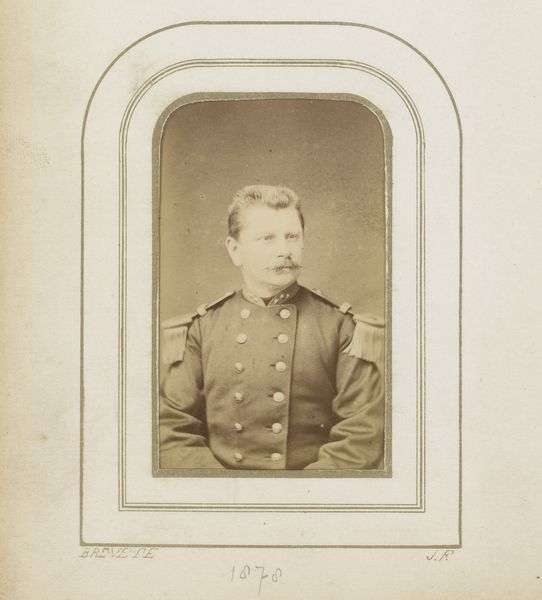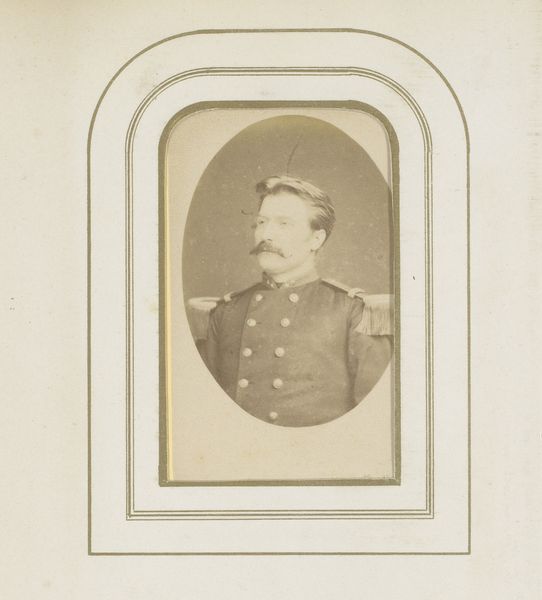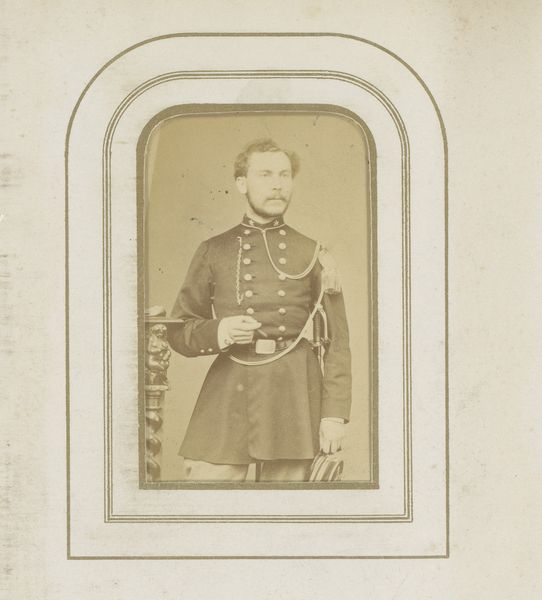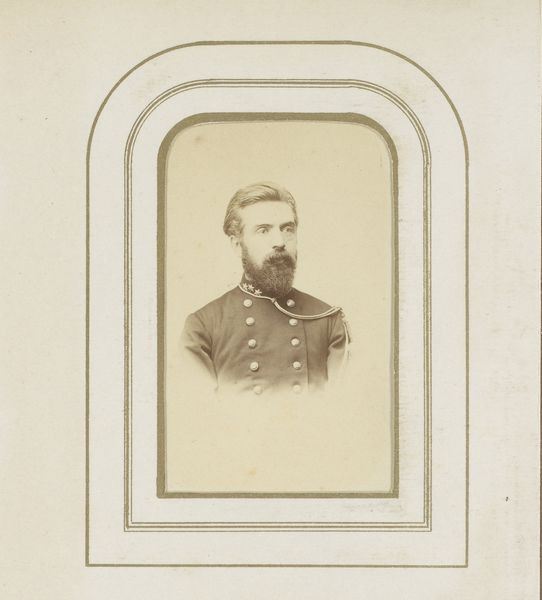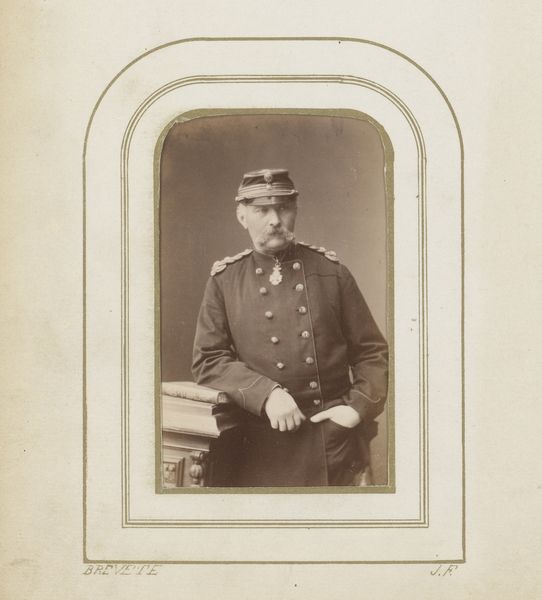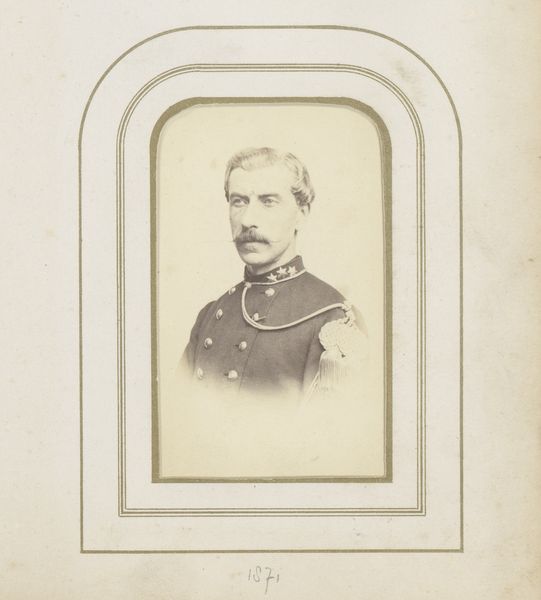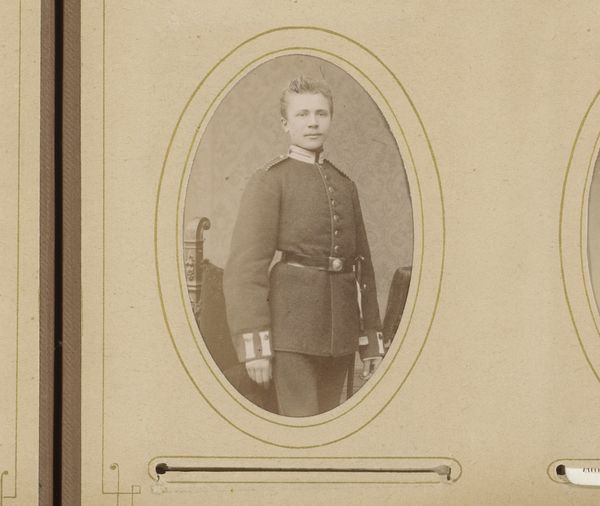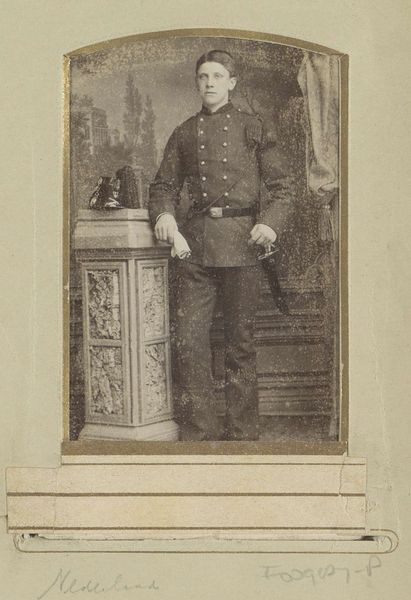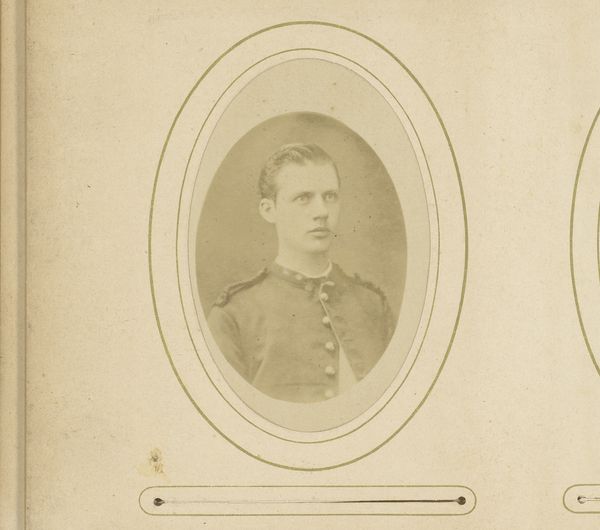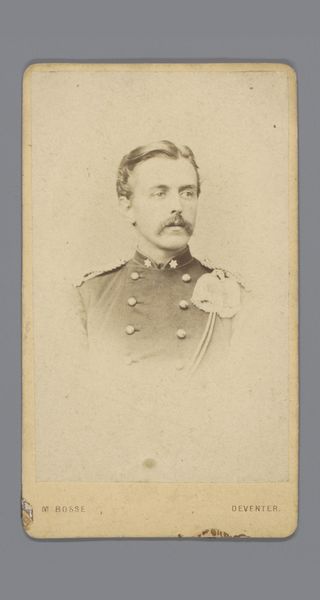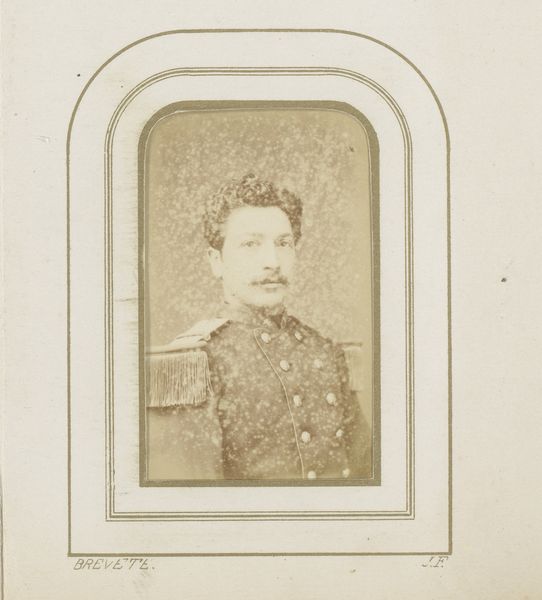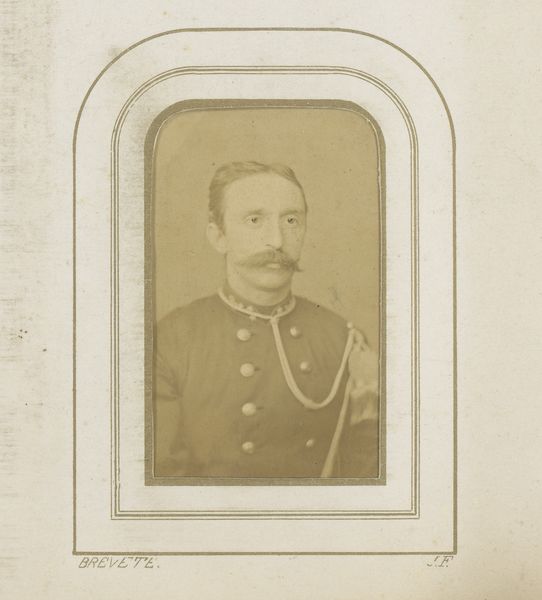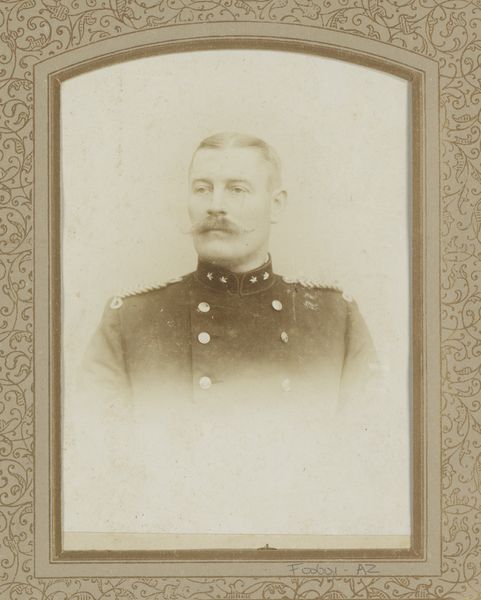
daguerreotype, photography
#
portrait
#
daguerreotype
#
photography
#
academic-art
Dimensions: height 83 mm, width 50 mm
Copyright: Rijks Museum: Open Domain
Editor: This is a daguerreotype titled "Portret van een staande man met snor en zwaard in uniform," made by Albert Delabarre sometime between 1866 and 1884. The man's pose feels so formal, rigid almost. How do you interpret this work? Curator: I see a complex interplay between power, representation, and the construction of masculinity. In the 19th century, photography, especially the daguerreotype, became a tool for solidifying social identities. This portrait stages its subject—the uniform, the sword, even the carefully groomed mustache—all signals of authority and status. Editor: So, it's like he's performing a role? Curator: Precisely. Consider the historical context. The latter half of the 19th century saw increasing nationalism and militarism across Europe. Images like this reinforced those ideals, normalizing a specific vision of manhood linked to military service and national pride. The very act of commissioning such a portrait suggests a desire to participate in this visual language of power. Editor: That makes sense. I hadn't considered how the act of portraiture itself contributes. Does the fact that it is a daguerreotype, a unique object, play a role? Curator: Absolutely. The daguerreotype process, with its detail and preciousness, elevates the sitter. This isn't just a likeness; it's an artifact imbued with social meaning. And we need to also think about who *didn't* have access to this kind of representation, the power dynamics inherent in who gets to be remembered, memorialized, and valorized. Editor: That gives me a lot to consider about the role of photography and portraiture at the time. Curator: Indeed, thinking critically about the forces at play behind even seemingly simple images opens up broader questions about how power is visualized and perpetuated through art.
Comments
No comments
Be the first to comment and join the conversation on the ultimate creative platform.
